Pentax MV1 Camera Review
I have a long history with Pentax. It was my first "proper camera". And over a period that spans more than a decade, I have used quite a lot of Pentax cameras. Both analog and digital. These days I don't use Pentax cameras ( or lenses ) as much as I used to. I use Pentax K10D to produce all the "product photos" for 50mmf2.com. It's the only digital camera I have with a macro lens. I use a Pentax MZ-5 when I need a film camera with some automation. For example when shooting slide film. And now I use Pentax MV1.
My history with Pentax MV1 is also long. Long and eventless. There's the first event where I got this camera. Which is from I don't remember where and I don't remember when. It must be at least 7 years ago but I don't remember the circumstances around it. It was probably for a lens that was attached to it as it's not a camera I would buy by itself. Next event was a few weeks ago when I decided to check what batteries it uses. It's two LR44 batteries that are trivial to get so I decided to see if the camera works. The last event is where I shot the camera and that's where we are now.
About The Camera
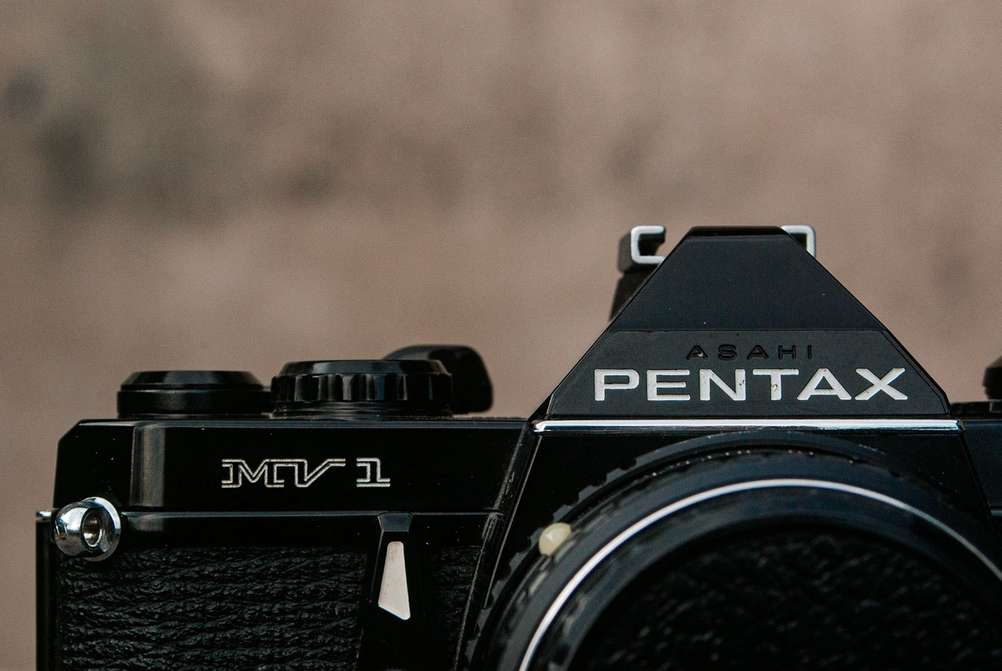
Pentax MV1 nameplate as taken with Pentax K10D.
It's a fresh camera for my usual standards. It was introduced in 1980 which is only 41 years ago. It's like it was yesterday.
Pentax MV1 is an aperture priority camera with no manual override. You can control the aperture on the lens and you can control the ISO. Everything else ( which is just the exposure time if we all remember the exposure triangle ) is handled by the camera. No manual controls is not my cup of tea which is why it took so long for me to use this camera. ISO ranges from 32 all the way up to 1600. It would be nice to have a wider range but it will handle 98% of most people use cases.
Light is metered through the lens so it works well when using filters. It's a centre weighted meter with no option lock exposure or any other fancy stuff like that. Just point and shoot. Metering happens through an open aperture as long as the lens supports it. This means that the viewfinder will remain bright even if the aperture is set to f22. Aperture will be closed down automatically before taking a shot and opened straight after. If you don't have a lens that supports open aperture metering then you will have to toggle the aperture yourself.
Speaking of lenses, you can mount K-mount lenses. K-mount has been alive for a long time so there is no shortage of lenses. You won't be able to use lenses that don't have a physical aperture dial but nobody cares about them anyway.
Camera has a Seiko shutter that has shutter speeds ranging from 1 second to 1/1000 of a second. A reasonable range but the only exposure you can select yourself is the 1/100 of a second as it's the flash sync speed. If you take the batteries out ( or they die ) then that's the only shutter speed that will fire. There's also bulb mode which you can also use without battery.
Viewfinder has a 0.85x magnification with 92% coverage. Nothing to write home about but very usable. MV1 was a camera aimed for beginner or casual photographers so it makes sense. Viewfinder has a split image and microprism ring in the center. I dislike split image microprisms so I ignore them and shoot like they are not there. The viewfinder won't show you what shutter speed will be used to take the photo. It can only show you traffic lights. Green means all good to take a photo. Yellow means that you can take the photo but shutter speed will be slow enough to potentially cause camera shake. Red means that the shot will be either over or under exposed.
Pentax MV1 was part of a series of cameras that were created after Olympus introduced their tiny OM series cameras. Pentax MV1 is also a very small camera for a SLR. You could even fit it in a big pocket if you attach a pancake lens to it. There aren't too many 35mm SLRs that can achieve that.
They are not given out for free but they won't break the bank. You can find working copies starting around $60 and topping out at $200. They will often come with some lens as well. Pentax 50mm lenses are all good. f2 version will be the likely candidate already attached to the camera.
Look And Feel
Camera looks lovely. Mine is all black which is always a bonus ( MV1 was available in black and chrome versions ). It's small and compact and the small number of controls are laid out in a beautiful fashion.
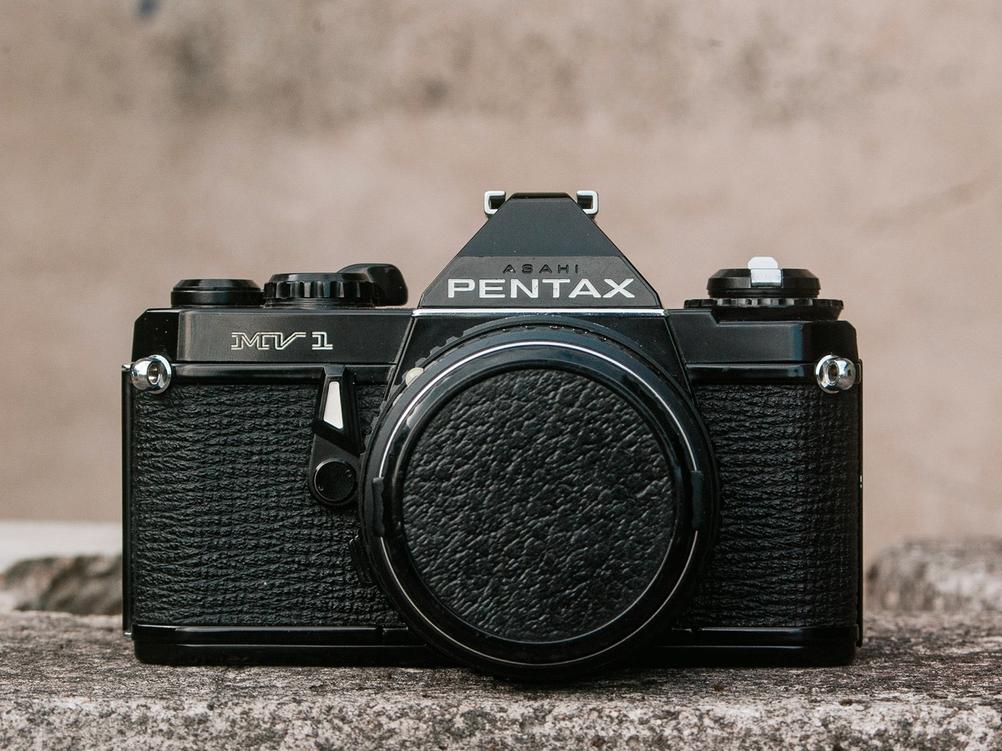
Pentax MV1 is a beautiful camera. It doesn't have any unique design characteristics but that's why it feels familiar and close to your heart.
It's built well and feels very solid. That shows up in weight. It's not a heavy camera but it's not super light as well. It has a decent weight that feels nice in my hands.
Mode switch that allows you to switch between auto mode, bulb and flash sync speed is very clicky, with a spot-on resistance. You won't be knocking it out by accident and you don't have to do regular weight lifting to operate it. I particularly like the two stage film advance lever. You can move it to an intermediary state where it doesn't advance film but it allows easy mode changes. It locks in place with a good click which brings shimmers of joy down my spine. I often find myself playing with it to flick between the two positions. After the intermediary position it acts like a normal film advance lever. Advancing action feels good as well.
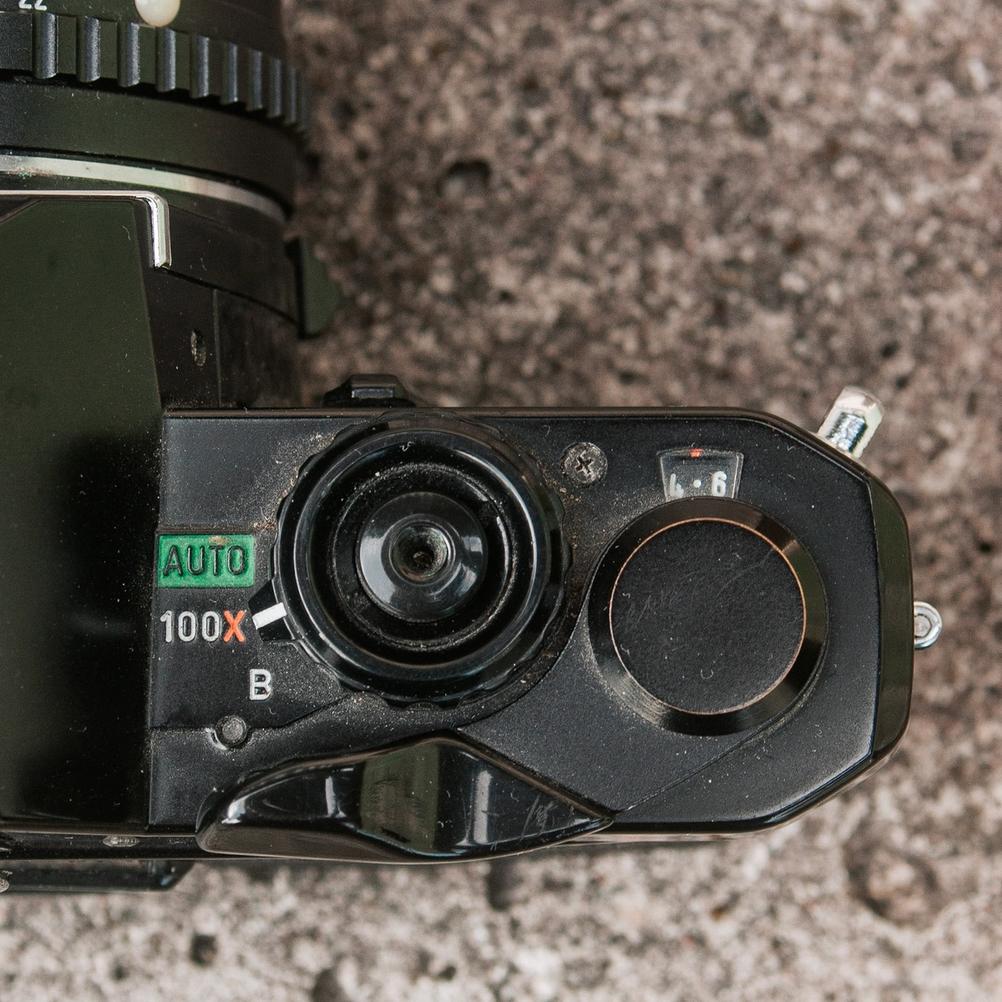
Mode dial only has three settings and it's trivial to understand how to use it.
It's not easy to use it when shutter cocking lever is collapsed next to it. That's why...
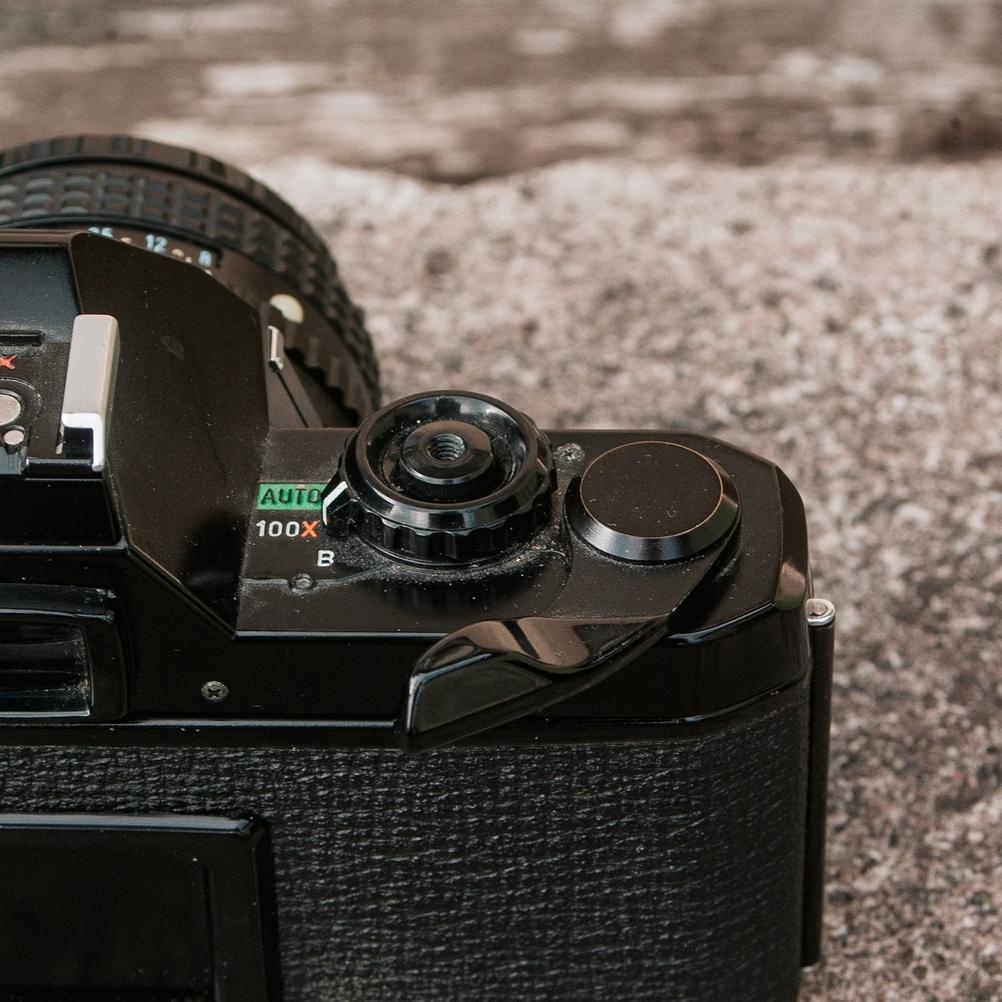
...you need to put the film advance lever into an intermediate position where it will happily sit. It's so nice to flick between these two states!
One control that I don't like that much is the ISO dial. It's located under the film rewind knob and you need to lift it to move it. That's all well and good but the actual movement doesn't offer any feedback so it doesn't tingle any sensations in your body. Missed opportunity.
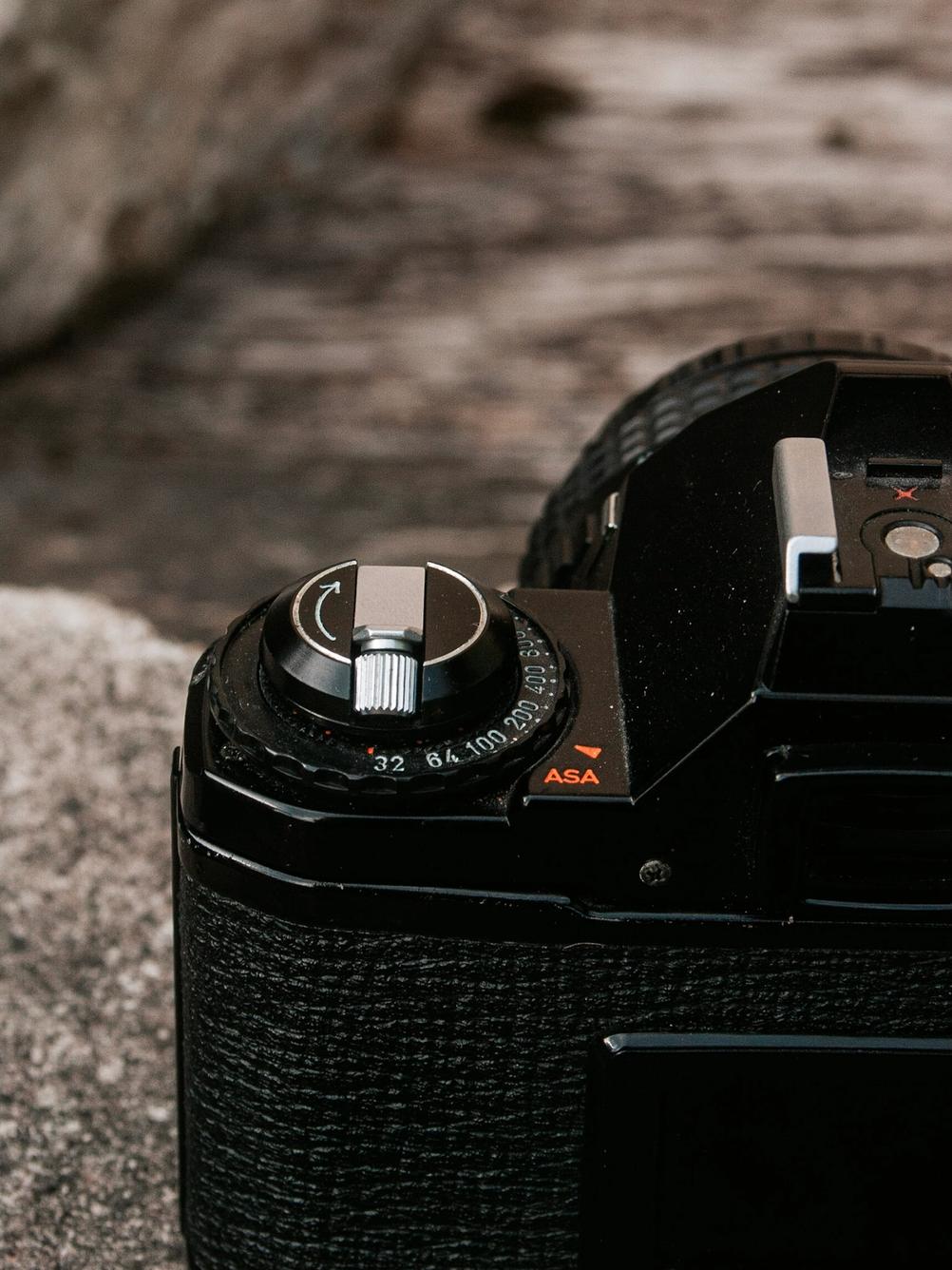
ISO dial sits below the film rewind knob. It's fine in use but it's too boring for my taste.
Lens release knob is also not great. It offers no feedback when you press it and it's still difficult to actually remove the lens when it's pressed. That might be down to my copy although it's a very simple mechanism so I'm not sure what could go wrong there.
The camera feels great in the hand. Unless you change the ISO every other shot and also change the lenses in the same interval then you should be very pleased with how the camera feels. I know I am.
In Use
Not only does the camera feel good to use, it's also easy to use. There aren't any controls to confuse you. I thought that I would hate not having the option to pick my own shutter speed but it's quite liberating at times.
One thing that helps with giving up the exposure dial is the accurate light meter. It's only a simple center weighted meter but it works well and should give a spot on result 95% of the time. It's only challenging light that proves too much for the light meter and you will end up with something too bright or too dark. Think strong backlit scenes or bright streaks of light that you want to expose for.
Viewfinder, although small, is nice to use. It's bright enough and the size doesn't hurt too much.

Viewfinder is not gigantic but it offers plenty of light and detail to come through to make focussing simpler. Rangefinders are better but it's a pleasant viewfinder, especially when compared to more modern SLR and dSLR cameras.
The simplicity comes at a cost. When you are presented with challenging light or want to make certain decisions that oppose the light meter, it's not easy to do so. The only avenue you have is the ISO dial. Change it to a lower or higher ISO to either overexpose or underexpose the photo. It would be nice to have a separate EV control.
You also can't lock the meter reading. It can be helpful to meter something and then re-frame by keeping the meter reading. Not possible here. You don't need this feature every time but when you need it, you need it bad. There is also no workaround for this lacking feature.
Another lacking feature that can hurt you is the fact that the camera won't tell you what shutter speed is being used. You only get the traffic light system which works 95% of the time but 95% is not 100%. One use case where I'm missing the shutter speed display is when shooting slower shutter speeds. I would like to know how slow it actually is. Even if the light is green, I only know that camera shake won't cause issues in the photo. I have no idea whether I can freeze the action. I could do some calculations in my head ( or use an external light meter ) to guess the shutter speed but that defeats the purpose of an aperture priority camera.
Another use case for shutter speed display is to see what the light meter has in mind. This becomes useful in challenging light where you're not sure how the light meter balances the scene. You have no idea what dance to do with the ISO dial because you don't know what the light meter thinks.
Having the shutter displayed in the finder would fix almost all issues I have with the Pentax MV1. It's a shame that it doesn't have this feature. Good news is that the model after MV1, the Pentax MG, does have it so if you get a chance, go for Pentax MG. I've not tried it but on paper it's a slightly improved MV1 so you can't really go wrong. From a price perspective it's roughly the same.
I don't have giant hands but they are not tiny and I don't have issues with the size of the camera. It's not as comfortable as a bigger camera but it feels secure in the hand, even without a strap.
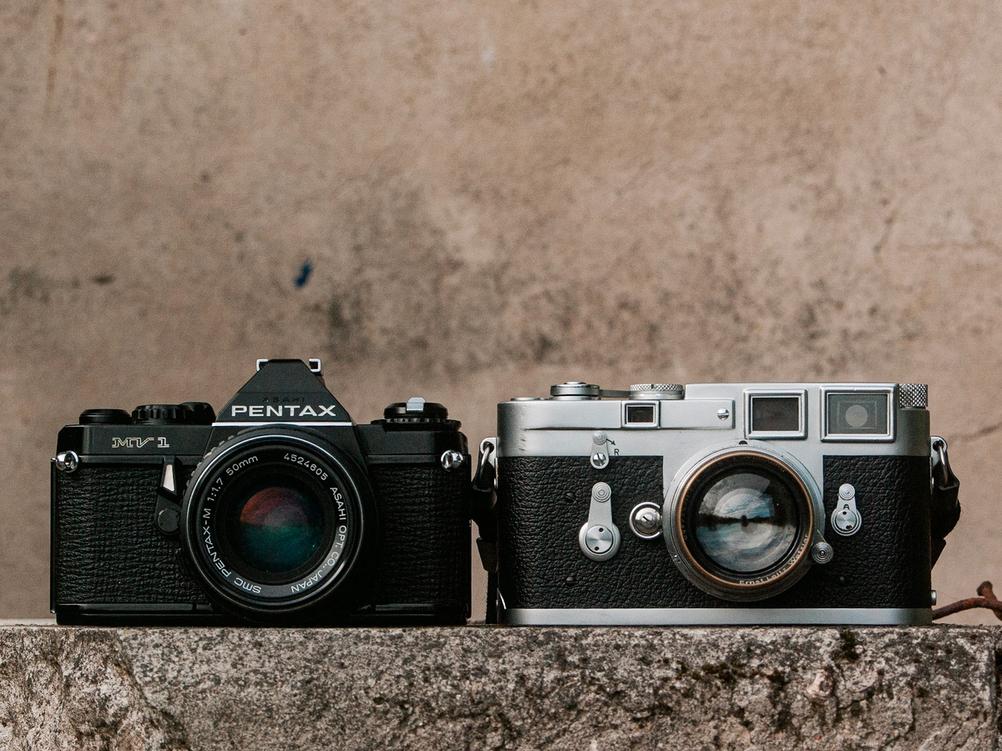
Pentax MV1 next to Leica M3. Although rangefinders are usually more compact than SLR cameras, you can see that MV1 manages to be roughly the same size as M3 if not slightly smaller in some aspects.
SLR lenses are chunkier than the rangefinder lenses. This is true. And Pentax 50mm f1.7 is quite a small lens when compared to other SLR lenses.
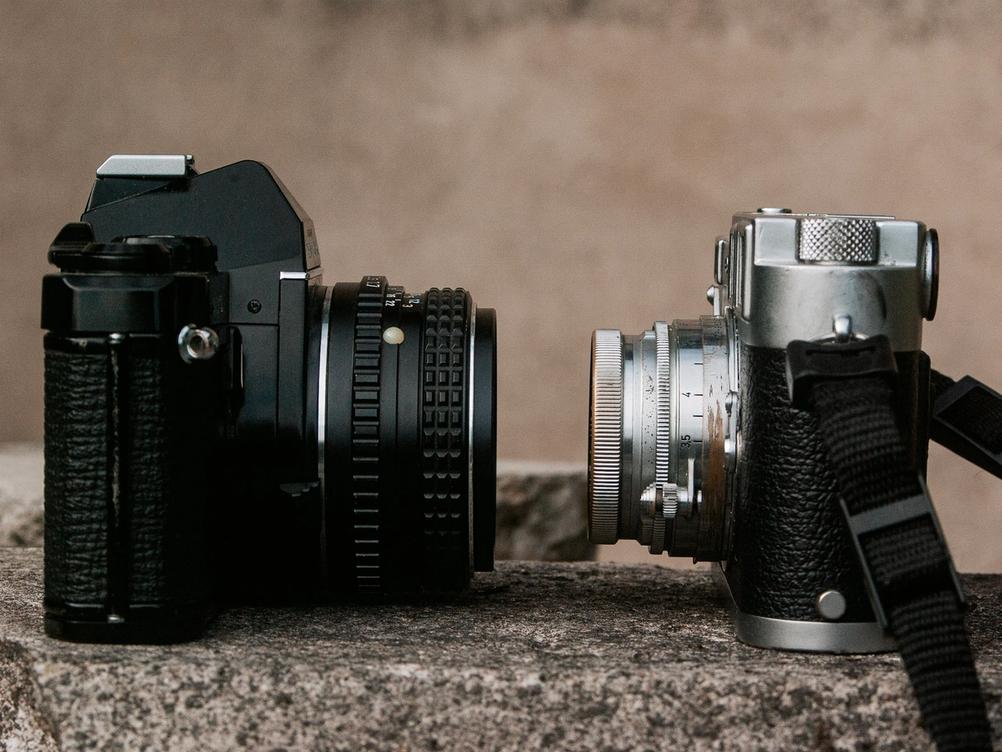
You can also collapse some rangefinder lenses making their size even smaller. Some rangefinder lenses are even this small without the need to be collapsed. On the SLR front the smallest lenses are pancake lenses but I don't have any to put up for comparison.
Even with the collapsable lens the M3 isn't much smaller than MV1. I have to note that MV1 is a small SLR camera whereas M3 is a pretty big rangefinder.
Results
Usual spiel that film and lens is responsible for images and not the camera. In this case the camera does play some part as it chooses the shutter speed for you. If it would choose the wrong one then the images would come out badly exposed. That would nullify all the benefits of a good film and lens.

- Camera
- Pentax MV1
- Lens
- Pentax SMC M 50mm f1.7
- Film
- Ilford FP4+ EI100
- Development
- Kodak HC-110; Dilution B; 9min
- Scanner
- Reflecta ProScan 10T
A good example where the light meter did good. There was a strong light coming from the window that's above the radiator. Meter did not get confused and metered for my wife.

- Camera
- Pentax MV1
- Lens
- Pentax SMC M 50mm f1.7
- Film
- Ilford FP4+ EI100
- Development
- Kodak HC-110; Dilution B; 9min
- Scanner
- Reflecta ProScan 10T
This was a simpler scene but it still had some challenges as the white building was reflecting a lot of light. Meter did good once again and the exposure is as I wanted it to be.

- Camera
- Pentax MV1
- Lens
- Pentax SMC M 50mm f1.7
- Film
- Ilford FP4+ EI100
- Development
- Kodak HC-110; Dilution B; 9min
- Scanner
- Reflecta ProScan 10T
Here the light meter struggled a tiny bit. It was a very contrasty scene with a bright sun beam hitting my children whilst the rest was in shade. The bright beam is slightly over-exposed but luckily film has enough latitude to not make it a huge issue.
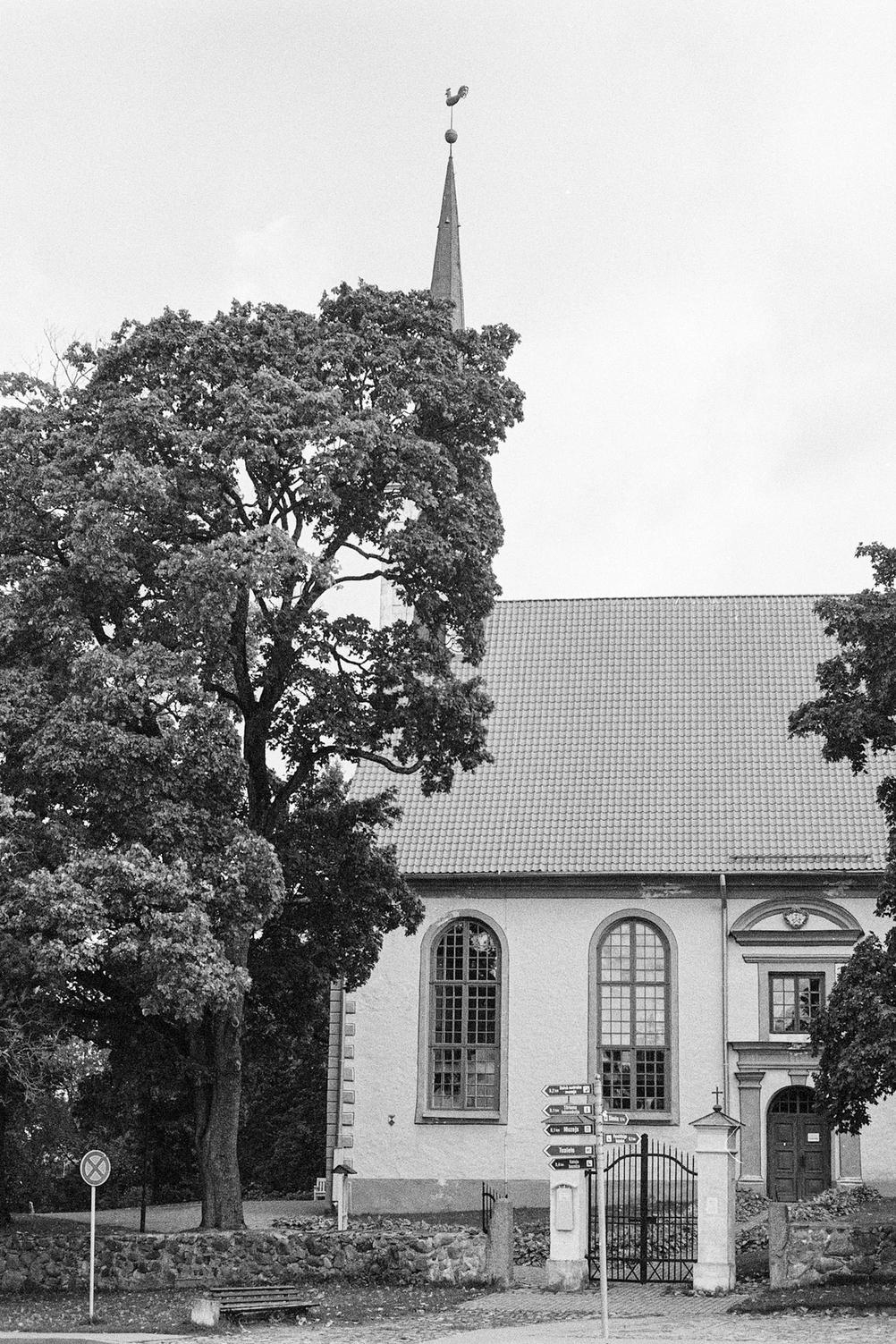
- Camera
- Pentax MV1
- Lens
- Pentax SMC M 50mm f1.7
- Film
- Ilford FP4+ EI100
- Development
- Kodak HC-110; Dilution B; 9min
- Scanner
- Reflecta ProScan 10T
Generic and flat scenes pose no issues for the light meter.

- Camera
- Pentax MV1
- Lens
- Pentax SMC M 50mm f1.7
- Film
- Ilford FP4+ EI100
- Development
- Kodak HC-110; Dilution B; 9min
- Scanner
- Reflecta ProScan 10T
When you see flowers you have to take a bokeh shot. It's the law. And I dare not to break it.
The leaves reflected a lot of light and it's well represented in the final image so top scores to the light meter.

Indoors is where not knowing your shutter speed starts to cause issues. Your instincts tell you that it's going to be on the slower side, but how slow? If you knew the answer you could play with the aperture to get the shutter speed to where it needs to be. With MV1 you're left with hope.
This photo turned out OK, but you can start to see movement in the lovely, kissing dog.

- Camera
- Pentax MV1
- Lens
- Pentax SMC M 50mm f1.7
- Film
- Ilford FP4+ EI100
- Development
- Kodak HC-110; Dilution B; 9min
- Scanner
- Reflecta ProScan 10T
Even if the camera is taking a photo of itself, the light meter doesn't get confused. Good to know!

- Camera
- Pentax MV1
- Lens
- Pentax SMC M 50mm f1.7
- Film
- Ilford FP4+ EI100
- Development
- Kodak HC-110; Dilution B; 9min
- Scanner
- Reflecta ProScan 10T
2 out of 2 churches were exposed correctly.
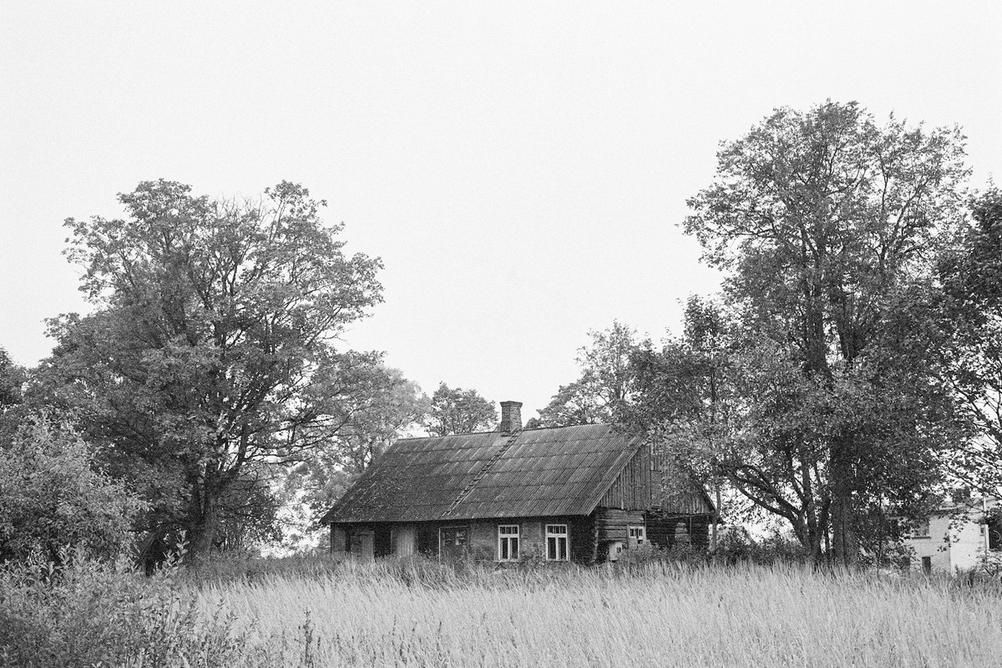
- Camera
- Pentax MV1
- Lens
- Pentax SMC M 50mm f1.7
- Film
- Ilford FP4+ EI100
- Development
- Kodak HC-110; Dilution B; 9min
- Scanner
- Reflecta ProScan 10T
I wasn't sure if this photo would be exposed correctly. The sky behind the house was quite bright and I had worries that the meter could get confused. My worries were not necessary and exposure is spot on once again.
Final Thoughts
I didn't expect to like this camera. Especially as much as I like it. I'm even considering finding a Pentax MG which would fix my shutter display issue and make this camera super nice. Sadly they don't cost nothing and there aren't too many of them available online. I'll keep an eye open for one and maybe one day I will have the near perfect aperture priority camera.
I don't plan to make MV1 my "main" camera. Main issue is that I don't like SLRs that much. And I also can't give up shutter control completely. That being said, I can see picking MV1 up from time to time when I don't want to think about exposure and just want to frame and shoot. It's perfect for that. It feels better than the more plasticky Pentax MZ-5. Most of the time I don't need the extra functionality that MZ-5 provides.
If there's a lesson to learn here it's that you shouldn't dismiss something before trying it. I ignored this camera for many years because of my dislike for automatic cameras. I learned that they don't have to be bad. This could apply to something in your life as well.
